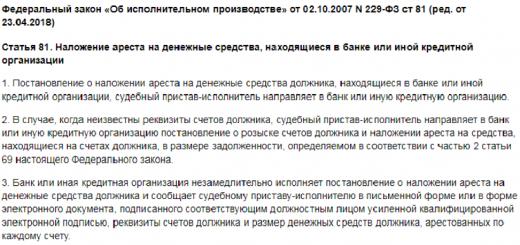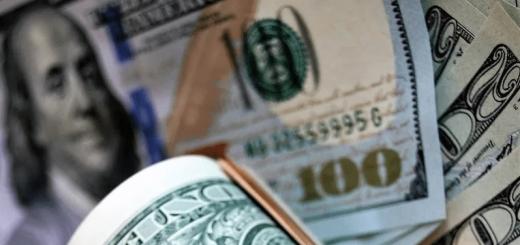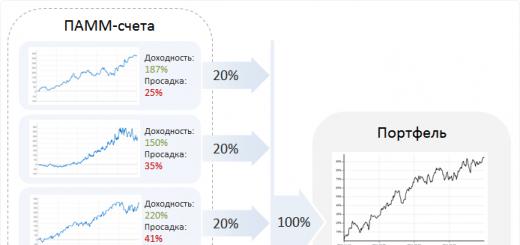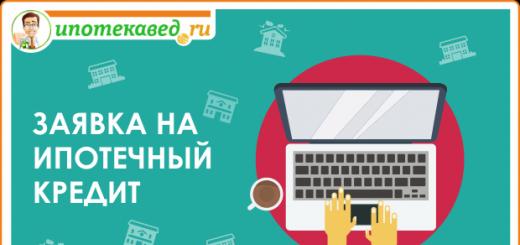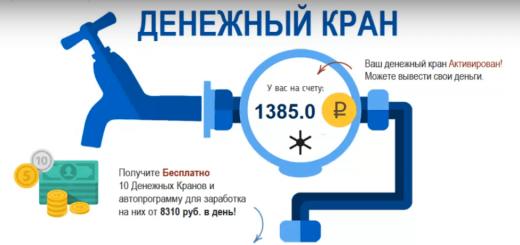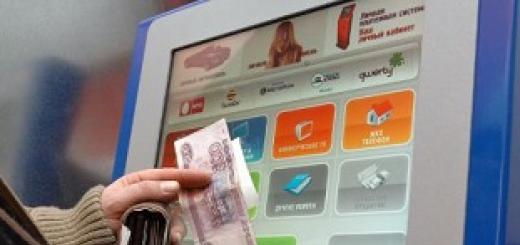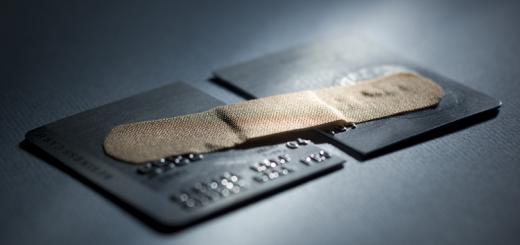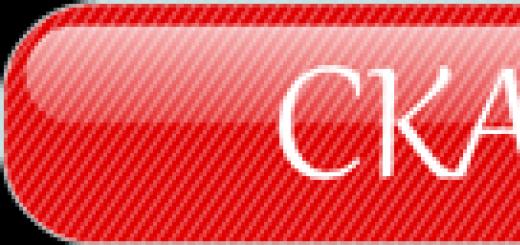Municipal educational institution secondary school No. 89
Section: Mathematics
Topic: Credit in our lives
Prepared by:
Islamova Veronika Aidarovna
10A class
Scientific adviser:
Vakhrusheva Elena Vyacheslavovna
mathematic teacher
Izhevsk 2009
Introduction........................................................ ........................................................ ...........................................3
Banking statistics................................................... ........................................................ ................4
Statistics................................................. ........................................................ ............................4
Banking statistics................................................... ........................................................ ..........4
Credit................................................. ........................................................ ....................................5
Formulas for calculating loan repayments.................................................................... ....................................6
Optimal behavior of participants in the consumer credit market.................................................7
Accumulation Money for the product................................................... ................................7
Loan settlement................................................................... ........................................................ .....................8
Sberbank........................................................ ........................................................ ...............................8
Russian Standard Bank............................................... ........................................................ .........9
Conclusion................................................. ........................................................ ................................eleven
Bibliography................................................ ........................................................ ....................12
Introduction
In our life, we often buy some kind of product. But in most cases, at the time when we want to purchase some product, we do not have that amount. That's why we take out loans from banks.
This paper presents how best to purchase a product. Of course, there are several options for purchasing an item. This is to save money or take out a loan from a store or bank.
As you know, calculating a loan in a bank is a direction of banking statistics. Therefore, it is necessary to understand banking statistics.
And so, the work has two tasks. The first is to understand what banking statistics and loans are, and the second is to calculate how profitable it is to purchase a product, using the example of a TV at a price of 30,000 rubles.
Banking statistics.
"No matter what industry
knowledge obtained numerical data, they
have certain properties for
which may need to be identified
a special kind of scientific processing method.
The latter is known as statistical
method or, in short, statistics"
J. Yule. M. Kendall
"Theory of Statistics"
Statistics
Word «
Statistics »
comes from Latin status(state, state of affairs) and is used in several meanings:
1. Statistics are scientific direction(a complex of sciences), combining the principles and methods of working with numerical data characterizing mass phenomena. It includes mathematical statistics, general theory statistics and a number of industry statistics (industrial statistics, financial statistics, population statistics, etc.).
2. Statistics are branch of practice aimed at collecting, processing, and analyzing statistical data (for example, there are state statistics bodies).
3. Statistics are a set of statistical data, characterizing some phenomenon or process (statistics of fertility and mortality in Russia, statistics of student performance, etc.).
4. Statistics are any function of observational results(for example, the arithmetic mean is a statistic, the sample variance is also a statistic).
The main task of statistics is the identification and study of general patterns inherent in aggregates consisting of a very large number of elements. These patterns usually appear not as an exact law, but only as a general tendency, with fluctuations and deviations from it in the properties of individual elements.
Banking statistics
Banking statistics- a branch of financial statistics, the tasks of which are to obtain information to characterize the functions performed by the banking system, to develop analytical materials for the needs of managing the country’s monetary system, primarily credit and cash planning and control over the use of plans.
Target banking statistics:
1. macro goal: to ensure
Characteristics of activities banking system;
Evaluation of its results;
Forecasting bank performance results.
Identify factors that determine the results and assess the impact of banking activities
on the development of market relations and its contribution to final economic results.
2. micro goal:
Identification of profitability factors, maintaining liquidity;
Determining the risk assessment when providing banking services and their minimization;
Compliance with economic standards established by the Central Bank.
Objects banking statistics - the totality of banking activities.
Banking statistics studies:
1. accumulation of temporarily free funds of state, cooperative associations, enterprises, organizations, institutions, public organizations, and the population;
2. short- and long-term lending to the national economy and population.
3. financing of capital investments;
4. non-cash payments;
5. circulation of cash through the cash desks of credit institutions;
6. savings business;
7. cash execution of the budget.
Statistics studies the banking system and its activities in various aspects: by number, forms of ownership and purpose of banks, types of credit and settlement services, range of services provided.
Subject statistical analysis includes both the banks themselves and other credit institutions, real and potential clients and correspondents, individuals and legal entities.
The objectives of banking statistics are determined by the content and specifics of its subject. They are limited to the statistical study of the totality of objectively determined economic relations within the banking system, as well as the relations of elements of the banking system with financial system as a whole and its elements.
Credit
Credit- is the provision of goods or money on credit (in installments) with the payment of interest. Credit is an integral element of commodity-money relations.
With its help, free cash capital and income of enterprises, the personal sector and the state are accumulated, turning into loan capital, which is transferred for temporary use for a fee.
Credit relations are implemented through the credit system. The credit system is represented by banking, consumer, commercial, government, and international credit. All these types of credit are characterized by specific forms of relationships and lending methods. The leading link in the credit system are banks.
IN national economy To manage lending processes, identify trends and patterns, statistical information is needed on credit investments and credit resources, its composition by type of borrower, by industry and form of ownership, on the size and composition of overdue loans, on the effectiveness of loans, and loan turnover.
Collects, processes and analyzes information about economic and social processes in lending banking statistics.
In order to calculate how much the total amount of payment to the bank for the loan will be and how much you need to pay, banking statistics formulas based on statistical formulas are used.
Formulas for calculating loan repayments
Bank loans are repaid using an annuity formula.
Annuity payment= (P*I/12)/(1-1/(1+I/12) t)
P – loan amount
I – interest rate on the loan in the form of a coefficient, i.e. divided by 100
t – number of payment periods (months).
The total amount of payments on the loan at the end of its term will be:
S = annuity payment*t
Optimal behavior of consumer loan market participants
Consumer loan is one of the most common types banking operations. As a rule, durable goods, cars, household appliances, and real estate are purchased on credit. In most cases, a person takes out a loan not for rational, but for psychological reasons (the desire to purchase an item as quickly as possible).
Let's consider two strategies: continue to accumulate by allocating a monthly amount of money or take out a loan from one of the banks, using the example of two banks.
Our task is to compare these two strategies.
Let's enter a couple of values that need to be executed:
P = 30,000 rubles – cost of goods
R 1 – monthly payment based on cost
a – monthly interest
A – monthly payment with interest
S - deposit amount with interest
Pd – balance of debt payment
I – annual interest rate
t – number of loan months
U = 13% – inflation value for the year.
Accumulation of funds for goods
Let's calculate how much you need to save per month for a product so that you can buy it in a year:
But we must not forget about inflation. Taking into account inflation, you need to save the amount of money per month according to the formula:

Let's calculate how much money we need to save in order to buy a TV for 30,000 rubles in a year:
 2,825 rubles.
2,825 rubles.
It turns out you need to accumulate:
S = A*t
S = 2,825*12 = 33,900 rubles.
Let's make a table:
| Product price now | RUB 30,000.00 | -P |
||
| Annual inflation | 13% | - U |
||
| Duration (month) | 12 | -t |
||
| Cost of goods after a year | RUB 33,900.00 | |||
| Pd | A | |||
| Month | Change balance owed, rubles | payment by main debt, rubles | ||
| 1 | 33 900,00 | 2 825,00 | ||
| 2 | 31 075,00 | 2 825,00 | ||
| 3 | 28 250,00 | 2 825,00 | ||
| 4 | 25 425,00 | 2 825,00 | ||
| 5 | 22 600,00 | 2 825,00 | ||
| 6 | 19 775,00 | 2 825,00 | ||
| 7 | 16 950,00 | 2 825,00 | ||
| 8 | 14 125,00 | 2 825,00 | ||
| 9 | 11 300,00 | 2 825,00 | ||
| 10 | 8 475,00 | 2 825,00 | ||
| 11 | 5 650,00 | 2 825,00 | ||
| 12 | 2 825,00 | 2 825,00 | ||
| Total By expiration of the term accumulation | By main debt | |||
| RUB 33,900.00 | ||||
But don’t forget that when you buy goods in a store in cash, they give you a certain discount. I decided to do the math at the Technosity store. There the discount is equal to 11% of the cost of the product. We get:
S 1 = 33,900 – 33,900*11/100 = 30,171 rubles.
Let's calculate how much interest we will overpay for the product using the formula:
p = (  - 1)*100 = 0,57%
- 1)*100 = 0,57%
This means we will pay an additional 0.57% for the goods, which is even less than one percent.
Loan settlement
There is a second option, so as not to wait a whole year, you can take out a loan from one of the banks. Let's give an example for Sberbank and Russian Standard Bank.
Sberbank
At Sberbank, the annual interest rate is 17%, that is, I = 17%
Let's create a payout table:
| Credit | RUB 30,000.00 | -P |
||
| Interest per annum | 17% | - I |
||
| Loan term (month) | 12 | -t |
||
| Annuity payment | RUR 2,736.14 | - An |
||
| Loan repayment | RUR 32,833.71 | -S |
||
| Pd | P 1 | a | A |
|
| Month | Change balance owed, rubles | payment by main debt, rubles | payment by percent, rubles | to pay, rubles |
| 1 | 32 833,71 | 2 500,00 | 465,14 | 2 965,14 |
| 2 | 30 333,71 | 2 500,00 | 429,73 | 2 929,73 |
| 3 | 27 833,71 | 2 500,00 | 394,31 | 2 894,31 |
| 4 | 25 333,71 | 2 500,00 | 358,89 | 2 858,89 |
| 5 | 22 833,71 | 2 500,00 | 323,48 | 2 823,48 |
| 6 | 20 333,71 | 2 500,00 | 288,06 | 2 788,06 |
| 7 | 17 833,71 | 2 500,00 | 252,64 | 2 752,64 |
| 8 | 15 333,71 | 2 500,00 | 217,23 | 2 717,23 |
| 9 | 12 833,71 | 2 500,00 | 181,81 | 2 681,81 |
| 10 | 10 333,71 | 2 500,00 | 146,39 | 2 646,39 |
| 11 | 7 833,71 | 2 500,00 | 110,98 | 2 610,98 |
| 12 | 5 333,71 | 2 500,00 | 75,56 | 2 575,56 |
| Total By expiration of the term lending | By main debt | by percentage | Total |
|
| RUB 30,000.00 | 3 244,23 | RUB 33,244.23 |
||
| | 10,81% |
|||
Now let’s calculate how much we overpay for the product:
p = (  - 1)*100
- 1)*100  10.81%
10.81%
Let's compare it with the result from saving and conclude that it is better to save money.
Russian Standard Bank
I = 23.4%
The bank has an insurance tariff, according to which the bank pays a one-time insurance premium.
insurance rate – 0.03%
one-time insurance premium = 0.03*30000=90 rubles
Let's make a table:
| How much do you need | RUB 30,000.00 | -P |
|||
| Interest per annum | 23,4% | - I |
|||
| Lending period (month) | 12 | -t |
|||
| Annuity payment | RUB 2,828.08 | - An |
|||
| Loan repayment | 33,937.01 rub. | -S |
|||
| Pd | P 1 | a | A | ||
| Month | Change balance owed, rubles | payment by main debt, rubles | payment by percent, rubles | to pay, rubles | |
| 1 | 33 937,01 | 2 500,00 | 661,77 | 3 161,77 | |
| 2 | 31 437,01 | 2 500,00 | 613,02 | 3 113,02 | |
| 3 | 28 937,01 | 2 500,00 | 564,27 | 3 064,27 | |
| 4 | 26 437,01 | 2 500,00 | 515,52 | 3 015,52 | |
| 5 | 23 937,01 | 2 500,00 | 466,77 | 2 966,77 | |
| 6 | 21 437,01 | 2 500,00 | 418,02 | 2 918,02 | |
| 7 | 18 937,01 | 2 500,00 | 369,27 | 2 869,27 | |
| 8 | 16 437,01 | 2 500,00 | 320,52 | 2 820,52 | |
| 9 | 13 937,01 | 2 500,00 | 271,77 | 2 771,77 | |
| 10 | 11 437,01 | 2 500,00 | 223,02 | 2 723,02 | |
| 11 | 8 937,01 | 2 500,00 | 174,27 | 2 674,27 | |
| 12 | 6 437,01 | 2 500,00 | 125,52 | 2 625,52 | |
| Total By expiration of the term lending | By main debt | by percentage | Total | ||
| RUB 30,000.00 | 4 723,76 | RUB 34,723.76 | |||
| Interest payment on loan | 15,75% | ||||
Let's calculate how much we overpay for the goods:
p = (  - 1)*100 15,75%
- 1)*100 15,75%
But if you pay off the loan on time, the final payment will be less than what you owe for a lump sum insurance premium. That is, you will pay 90 rubles less, which means only 34,633.76 rubles.
Let’s compare the result from savings and with the first bank, which is better to save or take out a loan through Sberbank.
Conclusion
This paper shows an example of purchasing a product. According to my calculations, it turned out that it is more profitable to save money. But if you need something very urgently, then I suggest taking a loan from Sberbank, but this work did not take into account the family’s income and the loan term was short.
In this work, the loan calculation was introduced through the annuity formula, but it happens that people ask that they pay the same amount per month, and this is calculated using a recurrent formula.
Although there are only two banks represented here, even if you compare them with others, these are the most profitable banks.
I hope that my work will help other people who cannot decide what is more profitable for them and do not know how to calculate how much they owe the bank if they take out a loan from it.
Bibliography
V.N. Studenetskaya “Solving problems in statistics, combinatorics and probability theory”, Volgograd: Teacher, 2005.
Y.S. Ershov “Financial mathematics in questions and answers”, Novosibirsk: Siberian Agreement, 1999.
V. Abchuk “Entertaining economics and business”, St. Petersburg: Trigon, 1998.
"Financial Statistics", ed. Salina, 2000
"Socio-economic statistics", ed. Nazarova, 2000
Gusev N.Yu. "Statistics: fundamentals of methodology", 1996.
"Workshop on Statistics" ed. Simchery, 1999
“Monetary and Credit Policy” / Money and Credit, No. 12, pp. 10-11, 1999.
Websites: http://cde.osu.ru/demoversion/course83/razdel1.html#theme1_1
RF. 646020. Omsk region, Isilkul district, Isilkul, st. Sovetskaya 2a,
tel. 20 – 903, email. address: schkola 3_isil kul@ mail . ru
Mathematics in interest and credits.
Completed by: Elizaveta Kozlova, 9th grade student.
Head: Elena Vladimirovna Zinchenko, teacher
mathematics and computer science
2013
Introduction…………………………………………………………….3
History of interest………………………5
Problems for calculating compound interest……………………6
Problems on bank interest………………………..9
Experimental work…………………….11
Conclusion…………………………………………………………….13
References………………………………………………………14
Introduction.
Relevance of the topic:
Nowadays, percentages are found in almost all areas of human activity. Therefore, the topic I have chosen is especially relevant.
Without the concept of "percentage" one cannot do without accounting, neither in financial analysis, nor in statistics. To calculate an employee’s salary, you need to know the percentage of tax deductions; to open a deposit account in a savings bank, our parents are interested in the amount of interest charged on the deposit amount; To know the approximate rise in prices next year, we are interested in the percentage of inflation. It is in trade that the concept of “interest” is used most often: discounts, markups, markdowns, profits, loans, income taxes, etc. - it's all interest.
The purpose of this work:
Show the breadth of interest and explore their use in lending, find out which loan is more profitable.
To achieve this goal, you must complete the following tasks:
— analyze the literature on the topic “Interest and percentage calculations”;
- get to know the formula compound interest;
— demonstrate the use of acquired knowledge in lending (consumer credit).
Solving mathematical problems of practical content allows you to be convinced of the importance of mathematics for various spheres of human activity, to see the breadth of possible applications of mathematics, and to understand its role in modern life.
The ability to perform percentage calculations is necessary for every person. Therefore, the plots of the problems are taken from real life. Various types of lending are considered.
The value of the results obtained is that they demonstrated a wide range of applications for calculating interest in economic areas, that is, the close relationship of mathematics with economics.
The history of interest.
The word “percent” is of Latin origin: “pro centum” means “from a hundred.” This phrase is often used instead of the word “percentage”. That is, the hundredth part of a number is called a percentage.
Interests were known to Indians back in the 5th century. and this is obvious, since it was in India that for a long time counting was carried out in the decimal number system.
Interests were especially common in Ancient Rome. The Romans called interest the money that the debtor paid to the lender for every hundred.
The Romans took interest from the debtor (that is, money in excess of what they lent). At the same time they said: “for every 100 sesterces of debt, pay 16 sesterces of interest.” This can be called the first loan of the world.
From the Romans interest passed to other peoples of Europe.
In Europe, decimal fractions appeared 1000 years later, they were introduced by the Belgian scientist Simon Stevin. In 1584 he published the percentage table for the first time.
The introduction of percentages was convenient for determining the content of one substance in another; They began to measure the quantitative change in the production of goods, the rise and fall of prices, the growth of money income, etc. as a percentage.
Symbol did not appear immediately. At first they wrote the word “hundred” like this: cto.
In 1685 In Paris, the book “Manual of Commercial Arithmetic” was published, where by mistake was typed instead of cto. After this, the sign gained universal recognition and we still use this percentage sign.
Compound interest problem:
The price of 51.2 rubles per capillary pen was increased three times by the same number of percent, and then decreased three times by the same number of percent. The result was a pen price of 21.6 rubles. By what percentage did the price of a capillary pen increase and then decrease?
Let's try, using the given numbers, to calculate by how many percent the price of the capillary pen was increased and then decreased. This is a compound interest calculation problem. Compound interest is calculated using the formula:
or ,
Where A– the initial value of a certain quantity;
TO- the value that resulted from several changes in the initial value;
n– number of changes in the initial value;
R– percentage change.
The plus sign is used in problems when calculating an increase in the price of a product, and the minus sign is used when calculating a price decrease.
Indeed, if the number changes by R% is replaced by multiplying by the desired number, then increasing the number A on R%, we get .
That is, to increase the number by R%, it is enough to multiply it by, and to reduce the number by R%, just multiply it by
Solution: Let's return to the problem and from the problem conditions we have
or .
;
; R=50
Answer: The price of a capillary pen increased and decreased by 50%.
Let's consider a few more problems using the compound interest formula:
Problem 1. ( from data savings bank Russia) the investor deposited a certain amount into the “Molodezhny” deposit in the Savings Bank of Russia. Two years later, the deposit reached 2809 rubles. What was the initial contribution at 6% per annum?
Solution :
Let X rubles – initial deposit.
X·(1+6·0.01) 2 =2809
1,06 2 X=2809
1,1236X=2809
X=2500
Answer: the initial deposit was 2,500 rubles.
Problem 2 .(from Unified State Examination) The price of the Volga car was reduced first by 20%, and then by another 15%. At the same time, it began to cost 238,000 rubles. What is the original price of the car?
Solution:
Let X rubles will be the initial cost of the car.
X·(1-0.2) ·(1-0.15)=238000
X·0.8·0.85=238000
X·0.68=238000
x= 350000
Answer: 350,000 rubles is the initial cost of the car.
Task 3. The speed of a body moving uniformly accelerates every second by 10%. Currently his speed is 10 m/s. What will its speed be after three seconds?
Solution:
(m/s)
Answer: after three seconds the speed will be 13.31 m/s.
Problem 4: After a price reduction of 30%, the sweater began to cost 2,100 rubles. How much did the sweater cost before the price drop?
Solutions:
Using the diagrams, we get that
S o ∙(1-30∙0.01)=2100
S o ∙0.7=2100;
S o =3000
3000 (rubles) – the sweater cost before the price reduction.
Answer: 3000 rubles.
Problems on bank interest.
Loan in the amount of 500,000 rubles. issued for a period of 5 years at 7% per annum. Compound interest is calculated, the frequency of calculation is at the end of each year. Define total amount loan debt at the time of repayment.
Solution.
(rub.)
Answer: the amount of debt at the time of repayment is 701,275.87 rubles.
A loan for the purchase of a house was issued in the amount of 4,000,000 rubles for a period of 5 years. The interest rate is 14% per annum. The loan is repaid at the end of each month. Determine the amount that must be paid for all five years and the monthly repayment payment.
Solution.
This problem is solved using the compound interest formula with interest accrued several times a year: ( n - credit term, m – number of payments per year). Then (rub.) In this case, the monthly payment will be (rub.).
Answer: the amount that must be paid for all five years is 8.022 10 6 rubles and the monthly repayment payment is 133.7 10 3 rubles.
Loan in the amount of 200,000 rubles. issued for a period of 5 years. The nominal annual rate is 20% per annum. Compound interest is calculated, the frequency of calculation is at the end of each quarter. Determine the total amount outstanding on the loan at the time of repayment.
Solution.
, n = 5, a m = 4. (rub.)
Answer: the amount of debt at the time of repayment is 530,660 rubles.
On January 1, the depositor deposited 2,000 rubles into a bank account according to the ordinary interest rate and approximate number of days at 22% per annum. What date do you need to deposit to get 2350 rubles?
Solution.
The duration of the year according to the scheme is approximate, the number of days will be 360. Let us transform the formula for one-time intra-annual accruals in such a way as to highlight the number of days of the financial transaction: ; (days), i.e. 286 days = 30 9 + 16 days.
Answer. The deposit must be made for 9 months and 16 days, that is, until October 16.
Experimental work.
Let's consider a practical problem that has application in real life - this is the calculation of loans. Nowadays, people are increasingly taking goods on credit (a loan in cash or commodity form provided by the lender to the borrower on repayment terms, most often with the payment of interest for using the loan), which is available to everyone.
Of course, everyone wants to buy required product, as profitable as possible. It’s very interesting which loans are the most convenient in our city. To conduct this experiment, I looked at consumer loans from banks in which teachers at our school receive wages, Rosbank and Sberbank. In order to calculate the total loan amount, you cannot do without compound interest formulas.
Having transformed the formula, we got: ,
Where A– initial cost of the loan;
s – loan term;
R– annual interest rate;
m — number of days in a year (360 days, every month – 30 days)
Suppose we need to purchase goods in the amount of 30,000 rubles and pay for it within 6 months.
Sberbank of Russia
The loan amount should not exceed your income multiplied by 10.
consumer loan without collateral(up to RR 1,500,000), rate – 17-25.5% up to 5 years.
Let's calculate our loan. rubles, i.e. the overpayment will be 2550 rubles.
consumer loan with guarantee individuals (up to RR 3,000,000), rate – 16.5 – 24.5% up to 5 years.
rubles, i.e. overpayment - 2475 rubles. It is profitable to take out this loan, but you need reliable guarantors.
Rosbank
consumer loan “Just money”(from 18,000 to 40,000 RR) rubles, overpayment – 2760 rubles.
rubles, overpayment – 3060 rubles.
From the calculations it is clear that it is more profitable to take a loan of 30,000 RR for 6 months from Sberbank, and a loan for a large amount and a long term from Rosbank. But in this work we do not take into account the nuances that may occur when obtaining loans; banks will tell you about this in detail.
Knowing the compound interest formula, it is easy to calculate the benefit of a loan at any time. This helps save the family budget.
Conclusion.
In conclusion, I would like to say that the ability to perform percentage calculations and calculations is necessary for every person, since we constantly encounter percentages in everyday life. I hope that my work will find practical application not only in algebra lessons and in preparing for exams, but will also help in life after school, even if my future profession is not related to mathematics. :// sberbank . ru – Sberbank of Russia website
http :// rosbank . ru – Rosbank website
ANNOTATION
This work belongs to the experimental research type. The subject of her research is repayment methods consumer loan. It examines the history of the emergence of consumer credit, its essence and main types. Using graphs and tables, methods of repaying a consumer loan, their advantages and disadvantages from the borrower’s point of view are clearly demonstrated. The practical application of methods for calculating loan payments is also shown.
INTRODUCTION
Credit is an objective category, an integral part of commodity-money relations, and its necessity is caused by the existence of commodity-money relations.
The role of credit in different phases of the economic cycle is not the same. In conditions of economic recovery and sufficient economic stability, credit acts as a growth factor. By redistributing huge amounts of money and goods, credit feeds enterprises with additional resources. Its negative impact may, however, manifest itself in conditions of overproduction of goods. This impact is especially noticeable in conditions of inflation. New means of payment entering into circulation through credit increase the already excess amount of money needed for circulation.
Consumer loans - pros and cons. The undoubted advantage is that the use of goods purchased on credit begins much earlier than those purchased with savings accumulated over a significant period of time.
On the other hand, buying on credit entails dependence on financial institution which issued this loan. There is one more negative side of consumer credit, and a very significant one: when buying goods on credit, the buyer spends significantly more than the real market value of the goods, only this payment is extended over time. There are no interest-free consumer loans. There are exceptions, however: sometimes lending rates lag behind inflation, and the loan can become not only interest-free, but even with a positive interest rate for the buyer.
Relevance of the work is that, despite the current financial crisis, customer credit will continue to develop at a progressive pace, since the problem of growing household incomes is always pressing, which means that credit will continue to be considered as an opportunity to purchase necessary goods. At the same time, the population should know the basics of loan repayment methods, since they significantly affect the size of loan payments.
Goals of work :
- Study the information offered by the city's banks.
- Find out which bank is more profitable to take out a loan from.
Tasks:
1.Explore theoretical basis consumer lending.
2.Collect information about loans provided by banks in our city to their clients.
3. Carry out calculations using the compound interest formula, how much a cash loan will cost and for what period it is more profitable to take it.
Object of study: consumer loan.
Subject of study: methods of repaying consumer loans in different banks in the city of Boguchar.
Hypothesis: If you study the theoretical foundations of consumer credit, then an objective opportunity arises to consider the practical application of loan repayment methods in order to determine the most beneficial for the borrower in terms of loan repayment terms.
Research methodology:
1) Studying the theory of consumer loans.
2) Collection, processing and analysis of information on lending in some banks in the city.
3) Carrying out calculations and analyzing the conclusions for the solution found.
View document contents
"The most profitable cash loan"
View presentation content
“Research work on the topic __The most profitable money”
Municipal state educational institution
"Bogucharskaya secondary school No. 1"
Research work on the topic “The most profitable cash loan”
7th grade student
MKOU "Bogucharskaya Secondary School No. 1"
Supervisor: Alabina G.Yu.
G. Boguchar

Relevance
Relevance of the work is that, despite the current financial crisis, consumer lending will continue to develop at a progressive pace, since the problem of growing household incomes is always pressing, which means that credit will continue to be considered as an opportunity to purchase necessary goods.

Problem
Amount needed
15,000 rubles to buy a tablet.
The question arises: “Which bank is more profitable to take money from?”

- Study the information offered by city banks
- Find out which bank is more profitable to take out a loan from

- Collect information about loans provided by banks in our city to their clients.
- Carry out calculations using the compound interest formula, how much a cash loan will cost and for what period it is more profitable to take it.

Object of study – consumer credit
1) Sberbank of Russia



Description of the research process
I decided to focus on loans for urgent needs, which are provided by banks in our city. My goal was to find out how much it would cost me to get a loan from some banks in our city to purchase the necessary tablet.

Study
I placed the data that banks provided me in comparative tables for loan terms for 12 months. Here's what I got.

Bank
Sberbank
Russia
Loan rate
Loan term (per month)
Commission for
issuance
loan
Rosselkhozbank
12 – 60
Consideration of the application
12 – 36
12 – 60
Early
repayment
2 days
Commission for
service
Maybe
1 day
Required
documentation
1 day
Maybe
Payment type
Application form, Russian passport with a note about
registration
Maybe
Passport of a Russian citizen, documents confirming income (copy of work book, certificate of income for the last 6 months)
Annuity Differentiated
Annuity
Application form, passport of a Russian citizen (other identification document), documents confirming financial status and employment
Annuity
Differentiated

comparison table
Sberbank
Russia
Monthly payment amount
Moscow Industrial Bank
How much will the overpayment be?
(for 12 months)
Rosselkhozbank
2063 + commission = 2140 rub.



- Based on the tables given in this work and diagrams 1, 2, I concluded that it would be more profitable to take out a loan in the amount of 15,000 rubles from Sberbank of Russia. Monthly payment will be 1390 rubles, and the overpayment will be 1675 rubles. To apply for a loan, you only need a passport of a Russian citizen and an application form for a loan. Although my parents and I will have to wait 2 days for this loan, during this time I will be able to leisurely choose the tablet I need!

Municipal educational institution
"Secondary school No. 16"
sat down. Alexandrovsky
Alexandrovsky district
RESEARCH
Diamonds. Myths and reality.
Completed by: Skvortsova Kristina
8a grade exercises
Head of work:
I. Introduction
II. Proof of the presented hypothesis.
a) The campaign of A. Macedonian to India in the 4th century BC.
b) Golconda in India.
c) Origin of diamonds.
d) Taming and training eagles.
e) Methodology for conducting a model experiment.
III. Conclusions.
IV. Literature.
I. Introduction
The presented project is multimedia and integrated.
The basis for the work on the project was the well-known legend.
In the 4th century BC, the troops of Alexander the Great, making a campaign in India, discovered the Valley of Diamonds in the mountains near Golconda, at the bottom of which they saw placers of precious stones. It was impossible to collect diamonds due to the abundance of poisonous snakes swarming in the valley. suggested this way out: the servants threw pieces of fatty meat to the bottom of the gorge, to which the diamonds stuck. Tamed eagles descended and brought meat with diamonds stuck to the emperor’s feet.
Was expressed hypothesis: This legend is based on real facts or is fictional.
They decided to test this hypothesis using sources of information on geography, history, chemistry, biology and experimental modeling.
Were formulated project objectives:
1.Prove that Alexander the Great and his army tried to conquer India in the 4th century BC;
2.Determine the authenticity of the Golconda site;
3. Study the issue of the origin of diamonds;
4. Consider the problem of the possibility of finding diamonds on the surface of the earth;
5. find out the facts of taming and training eagles;
6.Prove that diamonds stick to fatty meat (conduct a model experiment).
1. Campaign to India (326-325 BC) by A. Macedonian
Alexander the Great ( Alexander III The Great) (356, Pella, Macedonia - June 13, 323 BC, Babylon), king of Macedonia from 336, commander, creator largest state ancient world, son of Philip II of Macedon.
The son of the Macedonian king Philip II and Queen Olympias, Alexander received an excellent education for his time; his teacher from the age of 13 was Aristotle. Alexander's favorite reading was the heroic poems of Homer. He underwent military training under the guidance of his father. Already in his youth, he demonstrated exceptional abilities in the art of military leadership. In 338, Alexander's personal participation in the Battle of Chaeronea largely decided the outcome of the battle in favor of the Macedonians.
The youth of the heir to the Macedonian throne was overshadowed by the divorce of his parents. Philip's remarriage to another woman (Cleopatra) became the cause of Alexander's quarrel with his father. After mysterious murder King Philip in June 336 BC. e. 20-year-old Alexander was enthroned.
In the spring of 326 BC. e. Alexander invaded the lands of the Indian peoples from Bactria, conquered a number of tribes, crossed the Indus River and came into the possession of King Abhi of Taxila (the Greeks called the king “the man from Taxila,” that is, Taxila) in the area of present-day Islamabad (Pakistan). The main activity of the Macedonian troops in India took place in the Punjab region, the “five rivers” - a fertile region in the basin of the five eastern tributaries of the Indus.
Taxilus swore allegiance to Alexander, hoping with his help to defeat his rival, King Porus of eastern Punjab. Porus placed an army and 200 elephants on the borders of his land, and in July 326 BC. e. A battle took place on the Hydaspes River, in which Porus' army was defeated and he himself was captured. Unexpectedly for Taxila, Alexander left Porus as king, and even expanded his domain. This was Alexander’s usual policy in the conquered lands: to make the former rulers dependent on himself, while trying to maintain a counterweight to them.
Late summer 326 BC. e. Alexander's advance to the east was completed. When approaching the Ganges River, the Macedonian army refused to follow the king. The reason for the disobedience was dissatisfaction and fatigue from a long campaign, the end of which was not visible. The immediate cause was rumors of huge armies with thousands of elephants beyond the Ganges. Alexander, having humbled his pride, had to turn his army south in order to capture as many new countries as possible during the retreat to Persia.
From about November 326 BC. e. The Macedonian army floats down the Hydaspes and then the Indus rivers for 7 months, making forays along the way and conquering the surrounding tribes. In one of the battles for the city of Mallov (January 325 BC), Alexander was seriously wounded by an arrow in the chest (see Assault on the city of Mallov). Irritated by the opposition and passive courage of the peoples of India, Alexander exterminates entire tribes, unable to stay here for a long time to bring them to submission.
Alexander sent part of the Macedonian army under Craterus to Persia, and with the rest he reached the ocean.
Summer 325 BC e. Alexander moved from the mouth of the Indus to Persia along the coast of the Indian Ocean. The return home through the deserts of Gedrosia, one of the coastal satrapies, turned out to be more difficult than any battle; Many people died from the heat and thirst on the road.
In February 324 BC. e. Alexander reached Persia, thus completing the Indian campaign. The next time Europeans attempted to conquer India was only 2 thousand years later.
Trek to India. Fascinated by the idea of reaching the “edge of Asia” and becoming the ruler of the world, Alexander decided to undertake a campaign to India. At the end of spring 327 BC. e., setting out from Bactra, he crossed Paropamis and the river. Kofen (modern Kabul). Most of the kingdoms on the right bank of the Indus, including the strong state of Taxila, voluntarily submitted to him; their rulers retained their power and political autonomy, but were forced to agree to the presence of Macedonian garrisons in their cities. Having defeated the Aspasians and Assakens (Indian Asawaks), Alexander crossed the Indus and invaded Punjab, where he encountered fierce resistance from King Porus (Indian Paurava), who owned a vast territory between the rivers Hydaspes (modern Jhelum) and Akesina (modern Chenab) . As a result of the bloody battle on the Hydaspes (late April - early May 326 BC), Porus' army was defeated, and he himself was captured. Alexander became master of Punjab. In an effort to make Porus an ally, he not only left him his possessions, but also significantly expanded them. Having founded the cities of Nicaea and Bucephalia on the Hydaspes (in honor of his deceased horse), he moved east: crossing the river. Hydraot (modern Ravi), conquered the Katai and approached the river. Hyphasis (modern Sutlej), intending to invade the Ganges valley. However, the soldiers rebelled - they were tired of the endless campaign, had a hard time enduring the natural and climatic conditions of India, and they were frightened by the prospect of a war with the powerful state of the Nandas. Alexander had to turn back and give up his dream of world domination. He effectively gave up control of the lands east of the Indus, handing it over to local rulers.
At the Hydaspes, the land army met the Macedonian fleet under the command of Nearchus and together with it moved towards the Indian Ocean. During the campaign, Alexander carried out a successful military expedition against the Malli and Oxidraks (Ind. Shudraka), who lived east of Hydraot, and subjugated the regions of Musicana, Oxican and Samba. At the end of July 325 BC. e. reached Patala (modern Bahmanabad) and the Indus delta.
2. Golconda in India.
Golconda, or Golkanda, is an ancient Indian fortress located 11 km west of Hyderabad in the state of Andhra Pradesh. From 1512 to 1687 it was the capital of the sultanate of the same name.
The complex is well preserved and is located on a granite hill 120 m high. Golconda consists of four different fortresses containing a total of 87 bastions, some of which are still equipped with cannons. In addition to them, the fortresses have eight gates, four drawbridges, many aristocratic chambers, halls, temples, mosques, storehouses, stables, etc. One of the fortresses previously served as a state prison and treasury for the British-Indian vassal state of Hyderabad.
Golconda's architecture allows for interesting acoustic effects. The clapping of hands at one of the gates can be heard one kilometer away at the highest point of the fortress. This served as a warning in case of danger. Near the walls there are 18 granite mausoleums with high domes, in which rulers from the Qutub Shahi dynasty are buried. Beautiful bas-reliefs are visible on them, and landscaped gardens are laid out around them.
Previously, Golconda was famous for diamonds, which were mined and processed in the area. The famous Kohinoor, Derianur, Hope, and Regent diamonds are believed to have been found here. The Golconda diamond mines contributed to the wealth of the Nizams of Hyderabad, who ruled from 1724 to 1948, when Hyderabad was annexed by India. As an administrative unit, the former state of Hyderabad was divided in 1956, and Golconda was annexed to the state of Andhra Pradesh.
The name of the fort comes from the Telugu combination Golla-Konda ("Shepherd's Hill"). The first European to visit and describe Golconda was the Russian merchant Afanasy Nikitin.
3. Origin of diamonds
Diamond is a rare, but at the same time quite widespread mineral in nature. Industrial diamond deposits are known on all continents except Antarctica. Several types of diamond deposits are known. Already several thousand years ago, diamonds were mined on an industrial scale from alluvial deposits.
Diamond consists of pure carbon, but usually contains small impurities of various chemical elements. Included in the crystal structure or inclusions of other minerals. Colorless transparent varieties are characterized by a structural admixture of nitrogen 9 0.3%), although “nitrogen-free” diamonds are also found. In opaque and colored varieties, the content of impurities (oxides: aluminum, magnesium, iron, titanium) reaches 5%.
It is assumed that diamond crystallizes as one of the first minerals during the cooling of the mantle silicate melt at a depth of 150-200 km at a pressure of 5000 MPa, and then is carried to the Earth's surface as a result of explosive processes accompanying the formation of rocks, 15-205 of which contain diamond. There is another point of view, according to which diamond crystallizes at a relatively shallow depth due to the dissociation or partial oxidation of methane in a gas system at temperatures above 1000C and a pressure of 100-500 MPa. Diamonds are also found in deep rocks - eclogites and some deeply metamorphosed garnet gneisses. Small diamonds have been found in significant quantities in meteorites. as well as in giant meteorite craters, where melted rocks contain significant quantities of fine-crystalline diamond.
4. Taming and training eagles
The golden eagle is not just a bird of prey, but a predator that can be learned and trained. Golden eagles attack animals (including predators) many times larger than themselves. As for the types of successful hunting with these birds, the most popular can be called wolf hunting, and we will probably dwell on it in more detail. Like many smart birds, the golden eagle quickly gets used to the person with whom it lives and will never harm him. However, a bird can become a good hunter only if it is consistently handled and trained. There is an opinion among hunters that it is better to involve a female in training, and, of course, preferably not too old.
Training is usually carried out at least once a week; for training, they often use a stuffed animal made of a wolf, make slits in it and fill them with raw meat (preferably wolf, but if this is not available, any raw meat will do). The most productive way is to fill the stuffed animal's eye sockets with raw meat. Because the instincts of a predator are at work, the bird begins to forget that it was not she who killed the animal and is then ready to poison the wolf at almost any distance. A bird can be considered ready for work if it strikes a stuffed animal that the horse is dragging tied behind it at full speed. The ideal time for hunting is early morning and dusk.
Morning, because in the light of the sun the golden eagle sees and feels perfectly, twilight because at this time the birds’ hunger tends to worsen, and they better obey their predatory instincts. Before a hunt, the bird is usually not fed for several days, so that hunger will speed up its reactions. Hunters should remember that before going hunting, a bird must have a “special suit” that would protect it from the claws of a predator in case of emergency. It is possible that the wolf can simply run away from the bird, knowing the forest paths it is easier for him to hide in the wilds inaccessible to flight.
If hunting takes place in an area with dense bushes and deciduous thickets, the hunter is recommended to take hunting dogs with him. This role is ideally played by Russian greyhounds or hounds. If the wolf steals away from the bird, they will have to catch it and force it to leave the thicket. However, even here everything is not as smooth as it seems at first glance. You should know that for such a hunt, the bird and dogs must be kept in the same room so that they have the opportunity to get used to each other.
VI. Model experiment
Using a model experiment, we will prove that diamonds stick to fatty meat.
Experimental procedure
1. Use pieces of glass whose density is close to the density of diamonds as a diamond model.
3. Weigh pieces of glass - “diamond models”, and convert the mass into carats.
1) Collectors, banks can describe the property
Really, collection agencies and the security services of some banks like to threaten with home visits, where they will inventory (seize) the property, have a heart-to-heart talk, etc.
In reality, without a court decision that has entered into legal force, as well as writ of execution they do not have the right to foreclose on your property. Moreover, this can only be done bailiffs, having previously notified in writing.
2) The guarantor is not responsible for anything
Surely many of us have had to listen to requests from relatives, friends, work colleagues, employers, and, ultimately, to act as a guarantor for a loan. Like, " don't worry, it's just a formality, it doesn't threaten you" And somehow you always want to evade this honorable duty as a guarantor.
As it turns out, not in vain. The point is that according to Civil Code the guarantor is responsible for the debtor in full if the debtor was unable to fulfill the obligation himself. Still, this is not a simple friendly favor; the guarantee should be taken very seriously.
3) The myth about the availability of credit through a card
For several years now, consumer lending through credit card.There is an opinion that this is the most accessible way to get a loan, because cards are sent to everyone by mail, you just need to activate it - and you can buy whatever you want!
Bright booklets sent along with the card state that the interest rate will be no more than 10-15% per annum. And it seems that it is more profitable and accessible way getting a loan is simply hard to find! Especially if the size of your official salary does not allow you to get a loan from a reputable bank.
However, practice shows that the majority credit cards, which are so easy to obtain, is a direct path to financial slavery to the bank. In reality, the interest may turn out to be five to ten times higher than stated due to various commissions. And all the official clarifications from the courts that have appeared recently do not in the least confuse banks in setting commissions.
The most dangerous thing about this method of obtaining a loan– complete ignorance of the consumer about the real amount of the loan fee.
4) First of all, penalties should be written off, and only then - “ body of duty»
Often, bank borrowers, even with a slight overdue loan, find themselves in a vicious circle - when everything they contribute is written off as penalties and does not in any way reduce the amount of the principal debt. But according to civil law, the penalty should be written off last, after all interest for using the loan and the principal amount have been repaid.
Such actions of the bank can be challenged in court. Read more about the inadmissibility of writing off the penalty in the first place.
5) They will not hire you if you are late.
There is an opinion that if you have an overdue loan (even if it is paid off later), then you will not be hired for any job in a large company, even as a loader.Indeed, the security service can " break through» candidates for the position through their own channels (there are rumors that there are some semi-legal databases that reflect the credit activity of citizens, including refusals to receive loans and late payments). But according to labor law, the employer does not have the right to refuse employment simply because the candidate may have once violated a civil obligation, even if this is confirmed by a court decision.
In this case, of course, it is difficult to prove anything, unless the employer issued any document with such a basis for refusal or the refusal was voiced in the presence of witnesses who can then be brought to court. Then such a refusal to hire will be easy to challenge in court.
6) Refusals to provide a loan are entered into the credit history
It should be noted that a credit history bureau is an official organization that operates on the basis Federal Law « About credit histories" And strictly defined data is entered into the credit history. Among them there is no data on loans that were not given, there is only information on those that were issued.
In addition, according to this law, the borrower always has the opportunity to challenge a particular entry in the credit history bureau. And those semi-legal databases maintained by some security services have nothing to do with credit histories Dont Have.
7). Unaccounted commission - the myth of small percentages
Probably, these warnings are as old as the world, but let us remind citizens once again: pay attention to the fees for issuing a loan, for maintaining a loan account, etc.
Most of these commissions are illegal, and they can be challenged in court, but why contact a bank that begins the relationship by misleading the consumer, it is better to try to find a normal, serious bank.
8) The Myth of Debt Restructuring
Many borrowers, faced with the problem of the impossibility of timely repayment of loan debt, believe that it is enough to contact the bank, provide documents that they have experienced force majeure: they were fired from work, wages were delayed, they fell ill, etc., and they will be immediately will be exempt from paying debt or interest.
In reality, when restructuring a debt, they can only issue a second loan, which will be used entirely to repay the first (the borrower will just end up owing more).
They can also provide an installment plan, which will only increase the total amount of interest. But banks do not release you from debt. And everything, even such good reasons as illness or layoff at work, can only serve as a basis for reducing the penalty or exemption from it. But you will still have to pay the amount of debt and interest for using the loan.
9) The myth about loans secured by an apartment in a pawnshop
Recently, " car pawnshops" or even " apartment pawn shops”, where the loan is issued against the security of a car or apartment valued much lower than the market value.
Actually in Federal Law « About pawnshops“It is directly stated that a pawnshop has the right to accept only movable things as collateral and for storage ( movable property). So beware of offers " real estate pawnshops“Perhaps a completely different relationship will be hidden under the guise of a pawnshop.
As for transferring a car to a pawnshop, there is no direct prohibition, but again, if the car is appraised at several times lower than its real value, then it is possible to challenge such an appraisal in court, even if you signed it with your own hand.
10) “Interest-free loans”
Surely everyone has seen advertisements in electronics supermarkets about interest-free loans for equipment (0% overpayment).
Firstly, the loan is not issued by the store, the store does not have the right to engage in lending to citizens, since this requires a license, and secondly, banks have never been involved in charity.
Always read what the asterisk leads to, it usually leads to the following text with a prick-your-eye-size font: “ The loan is provided by CJSC "Bank _____________", the down payment is 0% of the price of the goods, the loan term is ___ months, the interest rate is 10% per annum" and so on.
Usually stores offset this interest rate provide a discount on individual species goods, but in reality the loan itself will not be interest-free.
